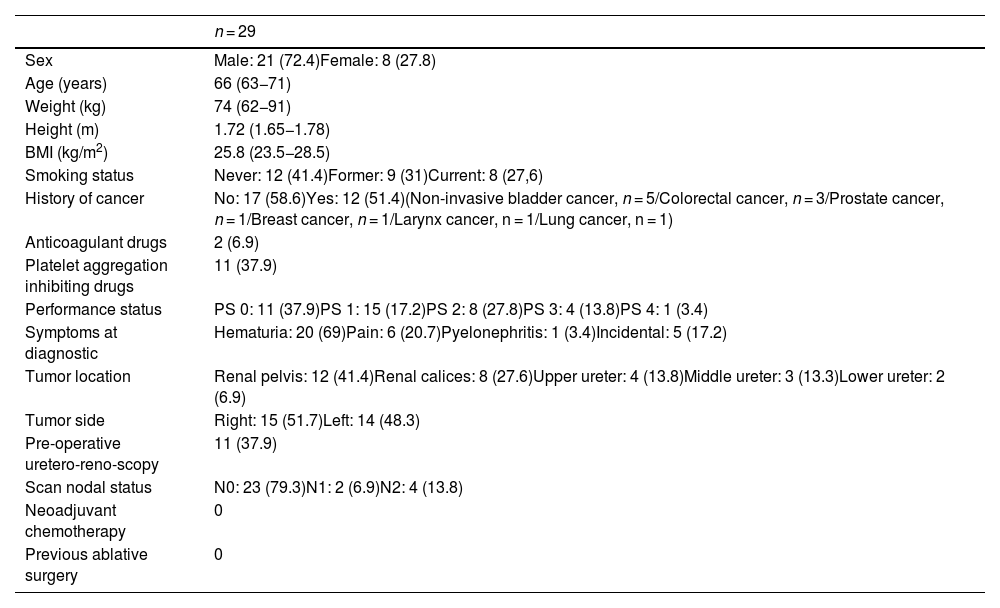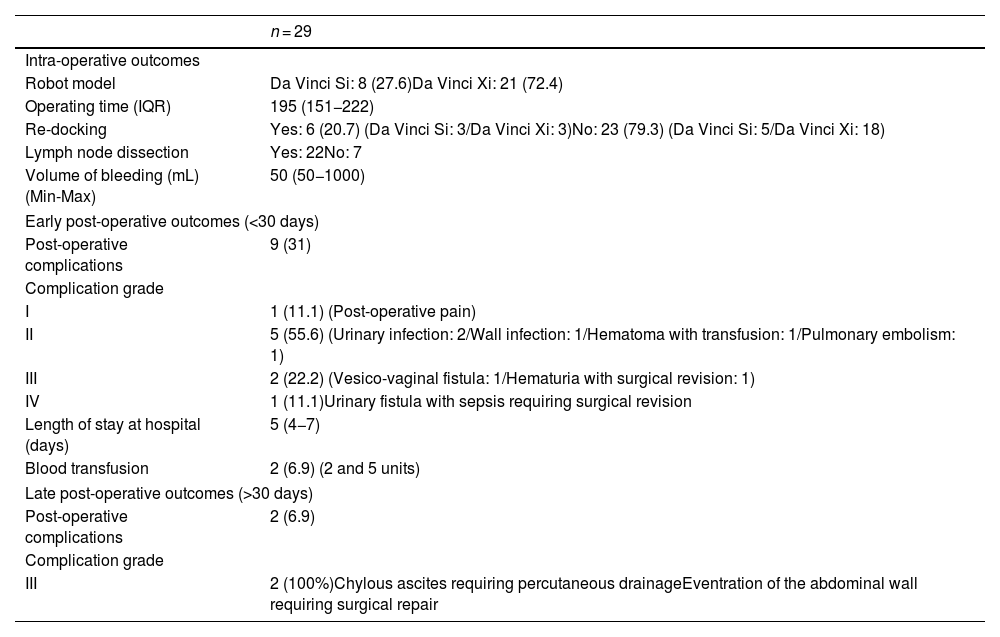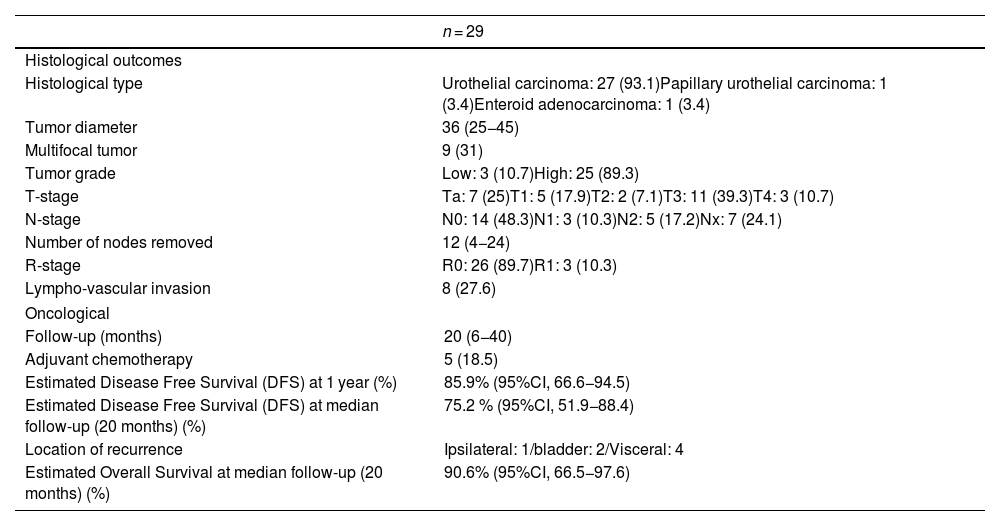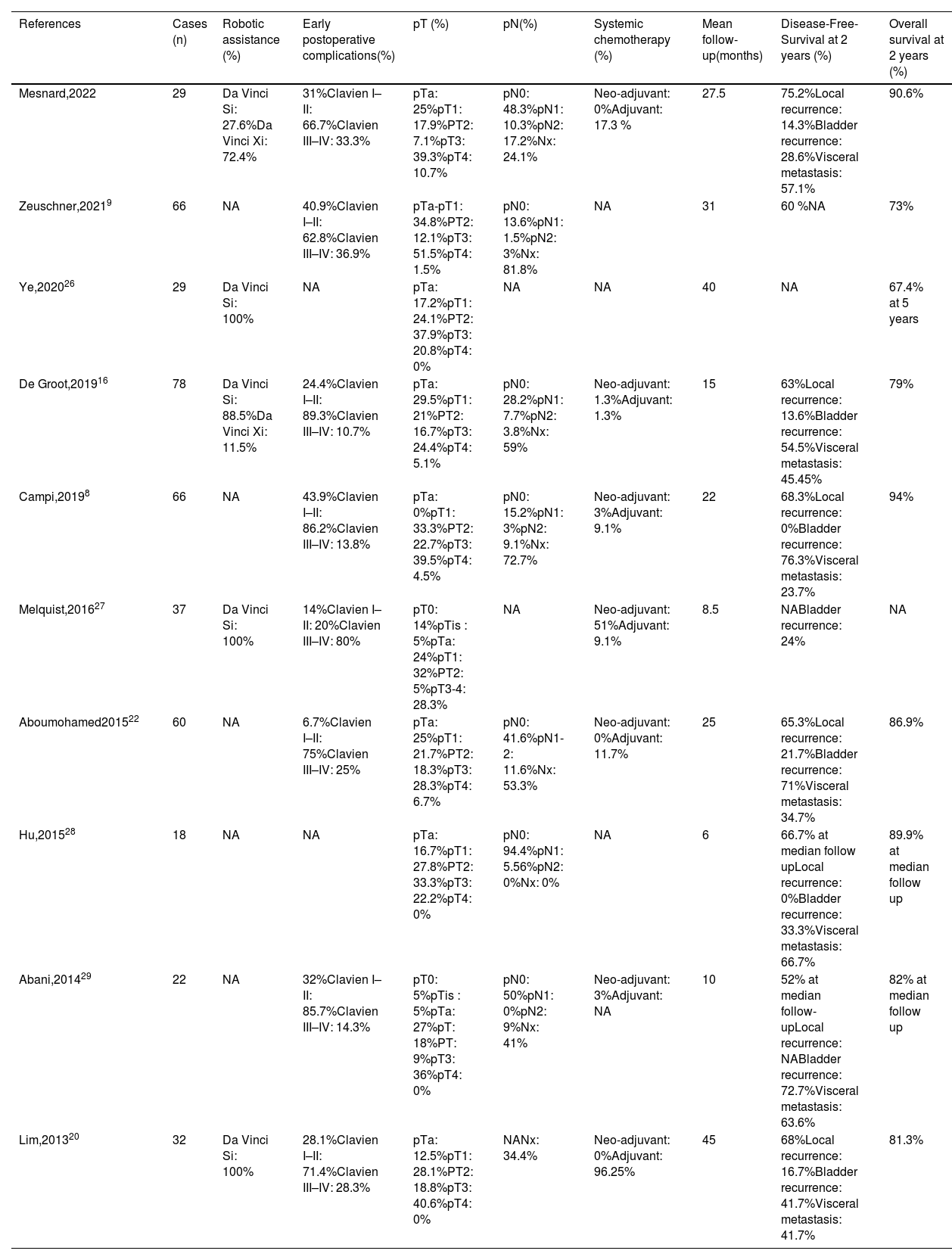The treatment of urothelial tumours of the upper urinary tract at high risk of specific mortality is based on radical nephroureterectomy (RNU). Robotic-assisted laparoscopic radical nephroureterectomy (RARNU) is still under investigation to definitively establish the safety of this procedure in the management of urothelial tumours of the upper urinary tract. The primary objective is to evaluate the intra- and postoperative safety of RARNU and, subsequently, to evaluate the medium-term oncological results.
MethodsOur study is a retrospective, mono-centric study with a collection of RARNUs conducted between 1st January 2015 and 1st October 2021. The RARNUs were performed with the assistance of the Da Vinci Si® robot, then from 2017 the Da Vinci Xi® robot. Whenever possible, the entire procedure was carried out without re-docking.
ResultsBetween 1st January 2015 and 1st October 2021, 29 RARNUs were carried out at our centre. Complete surgery without re-docking was possible in 80% of cases with the Da Vinci Xi® robot. One patient required conversion to open surgery due to difficult dissection. 50% of tumours were classified as T3 or T4. The 30-day complication rate was 31%. The median length of hospitalisation was 5 days. The disease-free survival at the mean survival time (27.5 months) was of 75.2%. One patient had a recurrence in the nephrectomy compartment and no patient had a peritoneal or trocar orifice recurrence.
ConclusionPerforming RARNU for the management of tumours of the upper urinary tract appears to meet the criteria of surgical safety and those of oncological safety.
La nefroureterectomía radical (NUR) constituye el tratamiento de los tumores uroteliales del tracto urinario superior con alto riesgo de mortalidad específica. La nefroureterectomía radical laparoscópica asistida por robot (NURAR) todavía está siendo investigada para establecer de manera concluyente la seguridad del procedimiento en el tratamiento de los tumores uroteliales del tracto urinario superior. El objetivo principal es evaluar la seguridad intra y postoperatoria de la NURAR y, posteriormente, evaluar los resultados oncológicos a mediano plazo.
MétodosSe trata de un estudio retrospectivo monocéntrico basado en una recopilación de NURAR realizadas entre el 1 de enero de 2015 y el 1 de octubre de 2021. Las NURAR se llevaron a cabo con la asistencia del robot Da Vinci Si® y, desde 2017, con el robot Da Vinci Xi®. Siempre que fue posible, la totalidad del procedimiento se llevó a cabo sin reacoplamiento (re-docking).
ResultadosEntre el 1 de enero de 2015 y el 1 de octubre de 2021, se realizaron 29 NURAR en nuestro centro. En el 80% de los casos se pudo realizar toda la cirugía sin reacoplamiento con el robot Da Vinci Xi®. Un paciente requirió conversión a cirugía abierta por dificultad en la disección. El 50% de los tumores se clasificaron como T3 o T4. La tasa de complicaciones a los 30 días fue del 31%. La duración media de la estancia hospitalaria fue de 5 días. La supervivencia libre de enfermedad en el tiempo medio de supervivencia (27,5 meses) fue del 75,2%. Un paciente tuvo una recidiva en el compartimento de la nefrectomía y ningún paciente tuvo recidiva peritoneal o en los orificios de los trocares.
ConclusiónLa realización de NURAR para el tratamiento de los tumores del tracto urinario superior parece cumplir los criterios de seguridad quirúrgica y oncológica.











